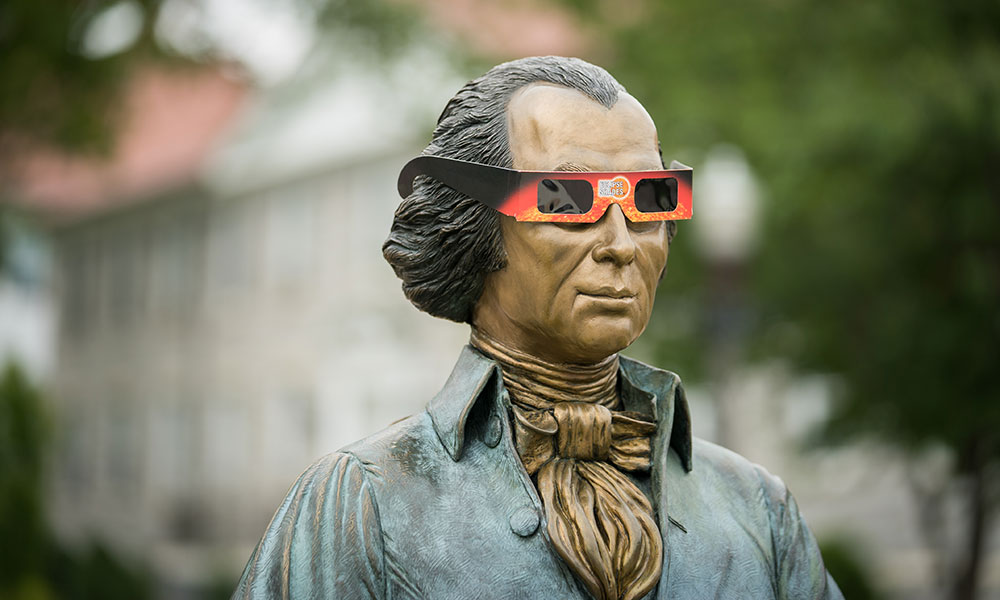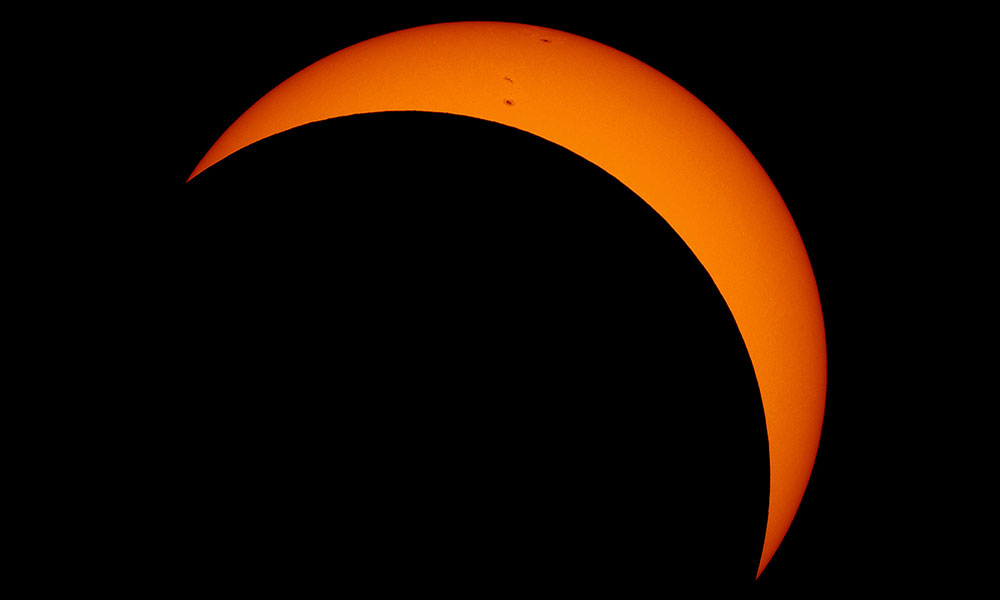How to safely see the eclipse
Planetarium Director Shanil Virani offers advice
JMU News
SUMMARY: Watching the phenomenon safely will require proper eclipse glasses, says Shanil Virani, director of the John C. Wells Planetarium at JMU.
On August 21, beginning about 1:14 p.m., the new moon will pass across the sun resulting in a partial solar eclipse for observers in Virginia. While the partial eclipse will last for about three hours, ending at 4 p.m., the full effect of the event will occur at 2:40 p.m. That's when the sky will darken and the temperature will drop as the moon blocks much of the radiation from the Sun. It could get dark enough to see some stars as well as the planets Venus and Jupiter, and some nocturnal animals might think night has fallen. But the darkness and cooler temperatures will be short-lived, about 2.5 minutes, as the moon continues its eastward journey. While observers in Virginia will not see a total eclipse, nearly 86 percent of the Sun will be blocked.
Watching the phenomenon safely will require proper eclipse glasses, says Shanil Virani, director of the John C. Wells Planetarium at JMU. And be careful what you buy, he says, "because there is a lot of bad information circulating online." One way to ensure proper protection, he said, is to use eclipse glasses that meet the specific ISO 12312-2 international standard.
Virani says eclipse glasses and handheld solar viewers should have the manufacturer’s name and address printed somewhere on the product; and that products should not be used if they are older than three years or have scratched or wrinkled lenses. He also warns against using homemade filters with ordinary sunglasses.
Virani said The American Astronomical Society has verified the following five manufacturers make eclipse glasses and handheld solar viewers that meet the ISO 12312-2 international standard for such products: American Paper Optics, Baader Planetarium (AstroSolar Silver/Gold film only), Rainbow Symphony, Thousand Oaks Optical and TSE 17.

Virani offers the following tips for safe veiwing:
- Always inspect solar filters before use. If they are scratched or damaged, discard them. Read and follow any instructions printed on or packaged with the filter. Always supervise children using solar filters.
- Stand still and cover your eyes with your eclipse glasses or solar viewer before looking up at the sun. After glancing at the sun, turn away and remove your filter — do not remove it while looking at the sun.
- Do not look at the un-eclipsed or partially eclipsed sun through an unfiltered camera, telescope, binoculars or other optical device. Similarly, do not look at the sun through a camera, a telescope, binoculars or any other optical device while using eclipse glasses or hand-held solar viewer. The concentrated solar rays will damage the filter and enter your eye(s), causing serious injury. Seek expert advice from an astronomer before using a solar filter with a camera, a telescope, binoculars or any other optical device.
- Never look at the sun without protective solar eclipse viewers.
An alternative method for safe viewing of the partially-eclipsed sun is pinhole projection, which can be achieved by using a half-gallon milk or juice carton. The project takes about 30 minutes and also requires some tape and parchment viewer.
Understanding phases of the moon is one of the biggest misconceptions in all of science, Virani said.
A solar eclipse is one of nature’s grandest spectacles. By following these simple rules, you can safely enjoy the view and be rewarded with memories to last a lifetime.
More information about eclipses can be found at Solar Eclipse Across America and from this NASA website.
